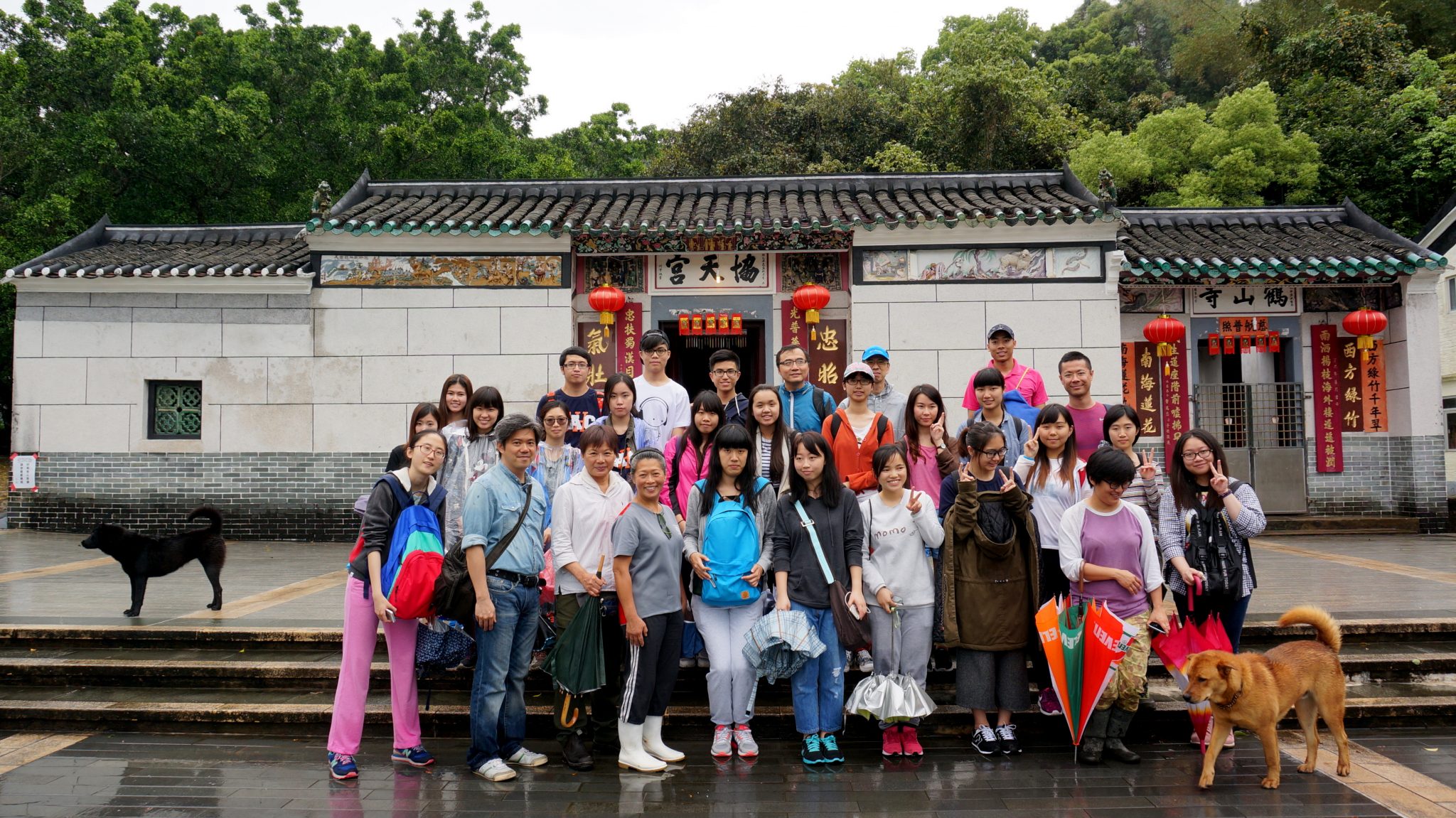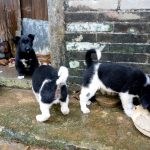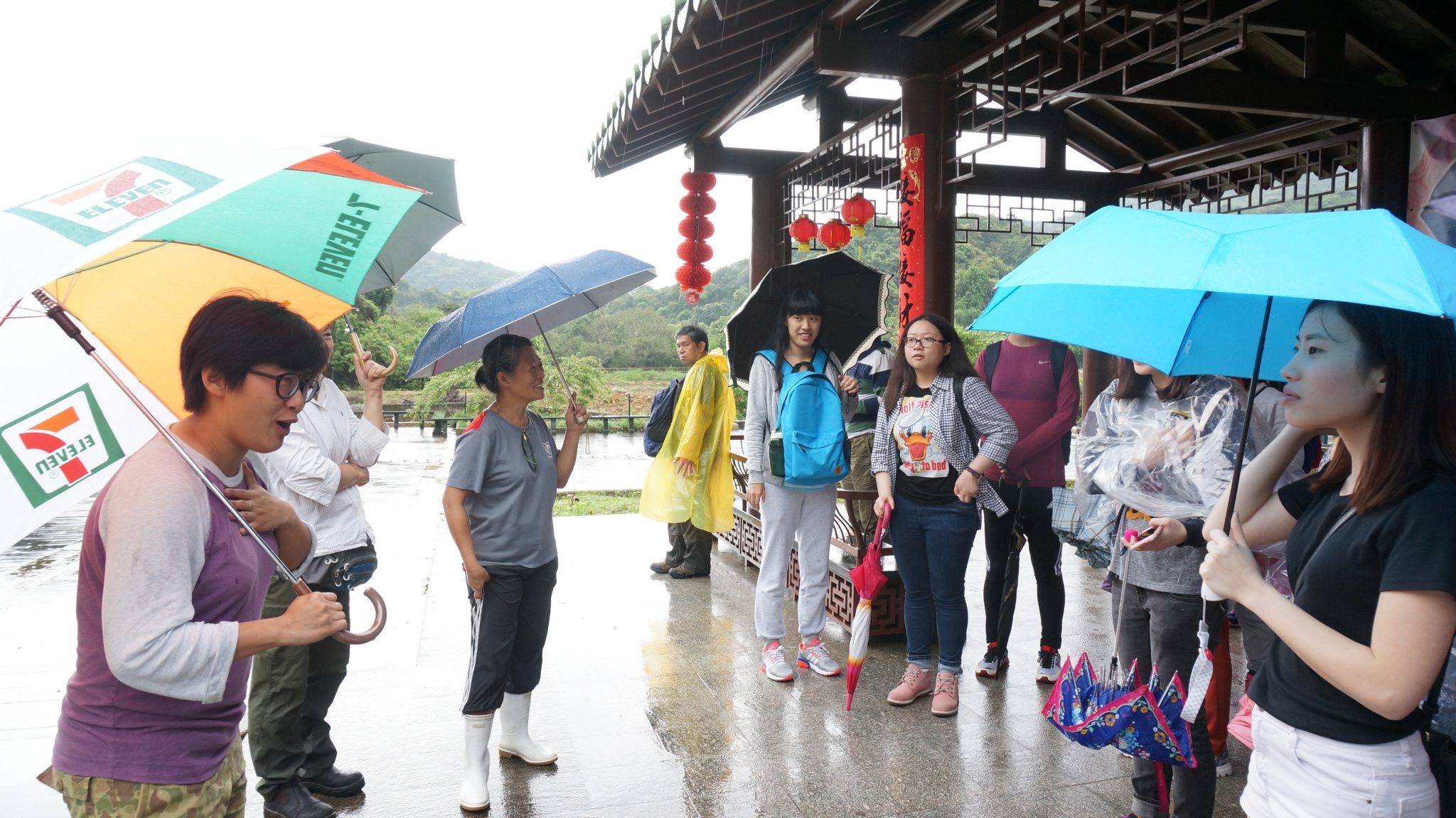
The tour guide from the Kadoorie Institute introduced Lai Chi Wo Village to students.
來自嘉道理研究所的導賞員向同學們介紹荔枝窩村。
On Sunday 10th April, 2016, Stanley Ho East Asia College (SHEAC) organized a day trip to Hong Kong with the theme of ecological and cultural hiking. Led by Mr. Walter Wan and Dr. Angus Lam (SHEAC Fellows), Dr. Thomas Lok (SHEAC Affiliate), as well as Dr. Sancia Wan and Dr. Jerome Zhang (Resident Fellows), more than 20 students visited the remote Lai Chi Wo Village and Wu Kau Tang in the northeastern part of the New Territories.
Departing very early in the rainy morning, the group traveled to Lai Chi Wo by the recently opened ferry route from Ma Liu Shui. The trip started with a tour guided by a member of the Kadoorie Institute and two local villagers at the Lai Chi Wo Village. Located within the Plover Cove Country Park and near Yan Chau Tong Marine Park, Lai Chi Wo is a 300-year-old walled Hakka village.
In addition to learning the history and culture of Hakka in the region, the students also became aware of the recent agricultural-led community revitalization and environmental enhancement program at Lai Chi Wo which has been carried out by the Kadoorie Institute in collaboration with scholars from The University of Hong Kong, Hong Kong Countryside Foundation, Produce Green Foundation, the Conservancy Association and Cultural Development Society of Lai Chi Wo.
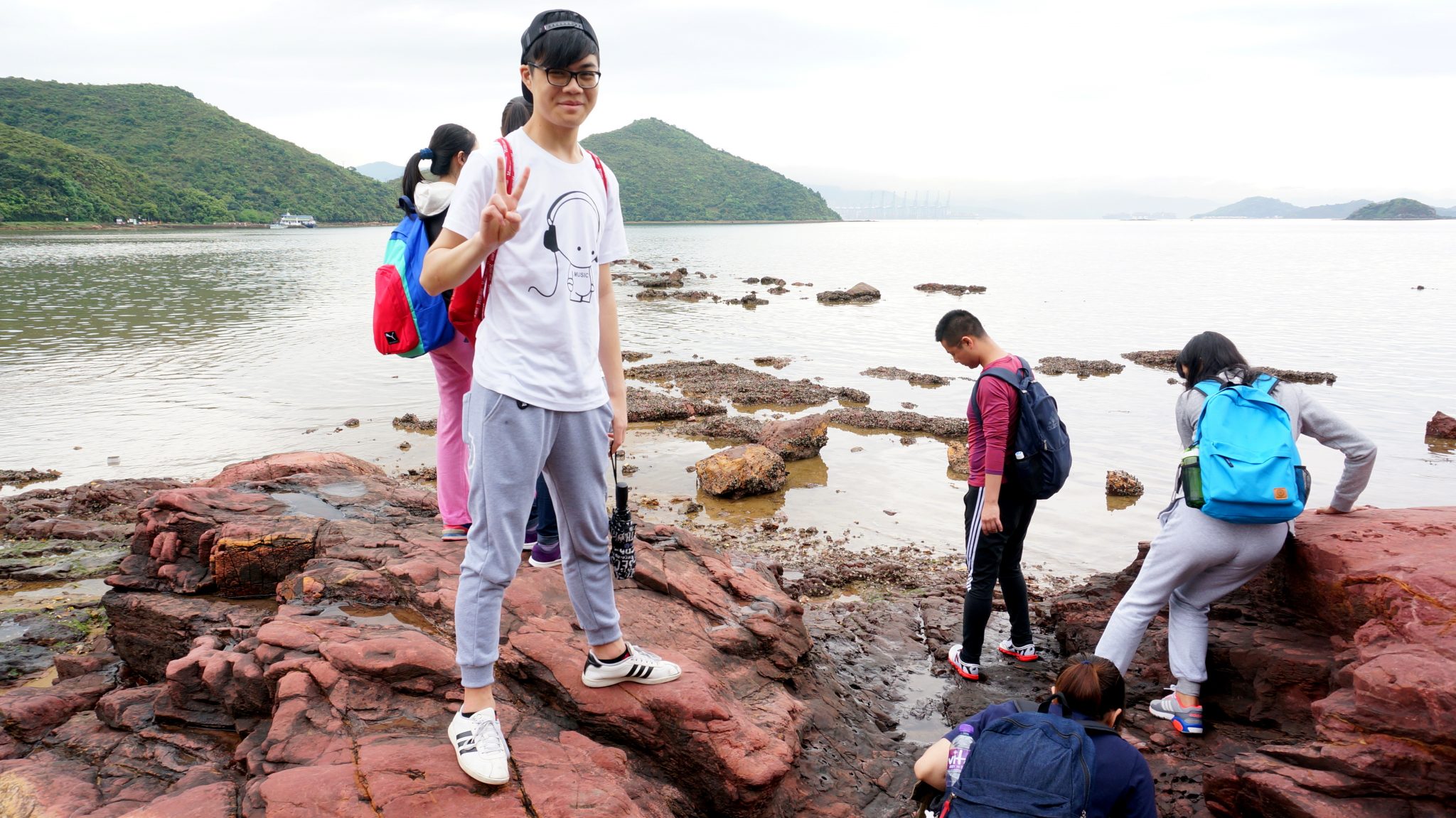
Students felt very excited to see different geological features along the coast of northeastern Hong Kong.
同學們看到香港東北海岸不同的地質特徵感到很興奮。
In the afternoon, the group visited the coast with mangroves and distinguished geological features. By the end of the trip, the students and teachers also hiked for two hours along the trails of Wu Kau Tang, and realized the great biodiversity of that area.
Through this trip, not only could the students realize the Hakka history and culture, but they could also develop a stronger sense of appreciation of the nature and strengthen their healthy living attitude.
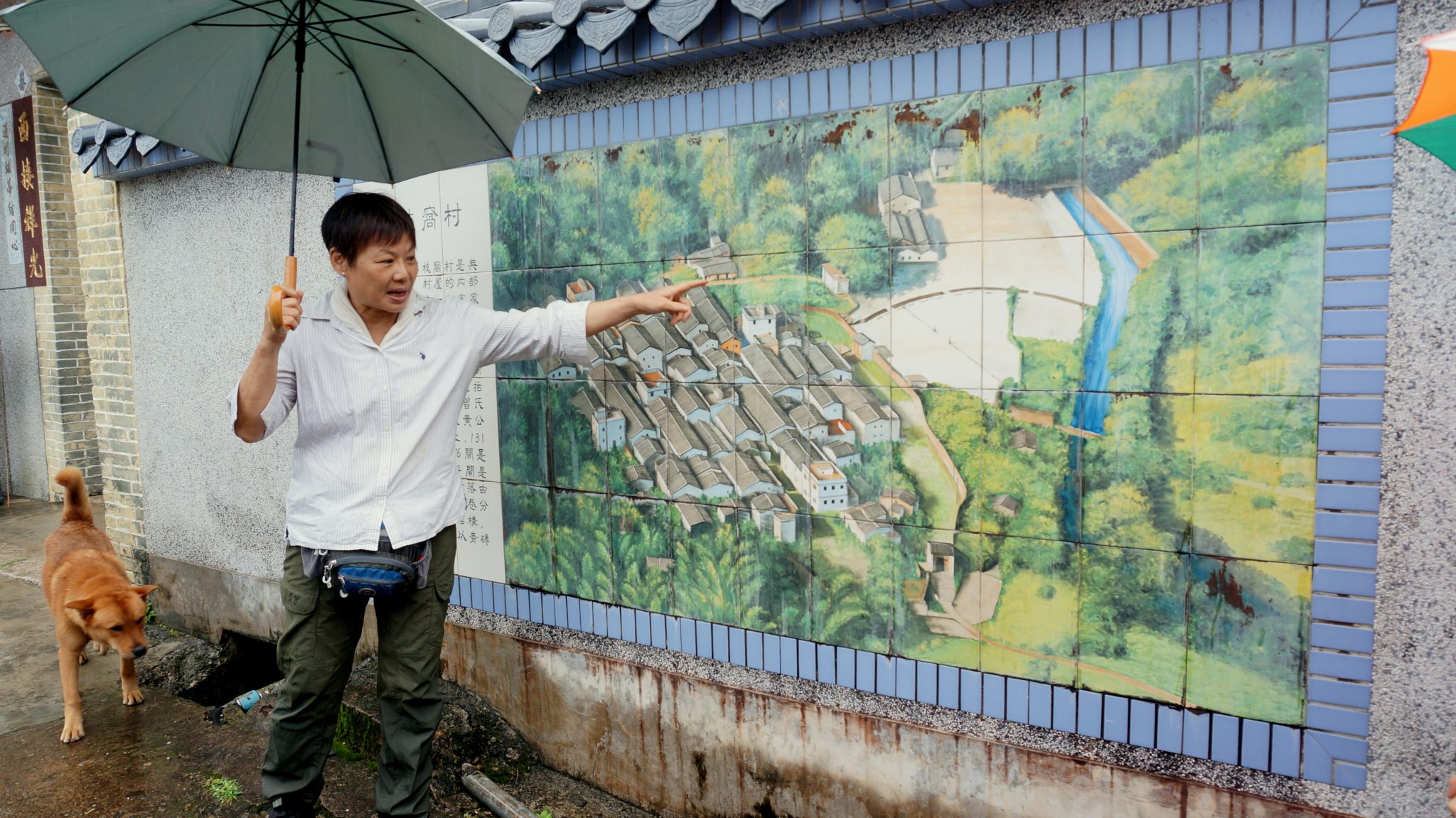
Two local villagers volunteered to introduce the group about the Hakka culture in the area.
當地村民志願者介紹有關該區域的客家文化。
何鴻燊東亞書院香港「生態‧文化」遠足之旅
2016年4月10號(週日),何鴻燊東亞書院組織了一次香港「生態‧文化」遠足之旅。本次活動由書院導師們溫日明老師、林智超博士、陸萬海博士、溫慧珊博士和張派予博士帶領,逾20名書院同學參加。師生共同探訪了於香港新界東北部的荔枝窩村與烏蛟騰區域。
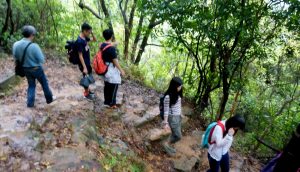
The group hiked along the Wu Kau Tang trails, and observed the natural environment of the area.
師生沿烏蛟騰行山徑遠足,沿途互相扶持,同時體會區內的自然環境。
在細雨綿綿的晨早,書院師生從馬料水乘新開通的輪渡進入荔枝窩。探訪之旅以來自嘉道理研究所成員的荔枝窩村導賞開始,師生在導賞人員的帶領下深入了解了這座位於船灣郊野公園並毗鄰印洲塘海岸公園的三百餘年客家古村。在了解當地客家歷史文化的同時,同學們也深入了解並親身體驗了由來自香港大學、嘉道理研究所、香港鄉郊基金會、綠田園基金、長春社和荔枝窩文化發展協會合作的農業活化與環境增進項目。
午後,書院師生參觀了鄰近荔枝窩村的紅樹林區域,並仔細觀察了鄰近區域的特殊地貌。參觀結束後,師生共同沿烏蛟騰行山徑遠足,歷時兩個小時,深刻體會區內的自然狀況與生態多樣系統。
在此次活動中,同學不僅深入了解了以客家文化為代表的人文文化,而且體驗了自然之美,並加深了健康生活概念的體會。
- Two local villagers volunteered to introduce the group about the Hakka culture in the area.

